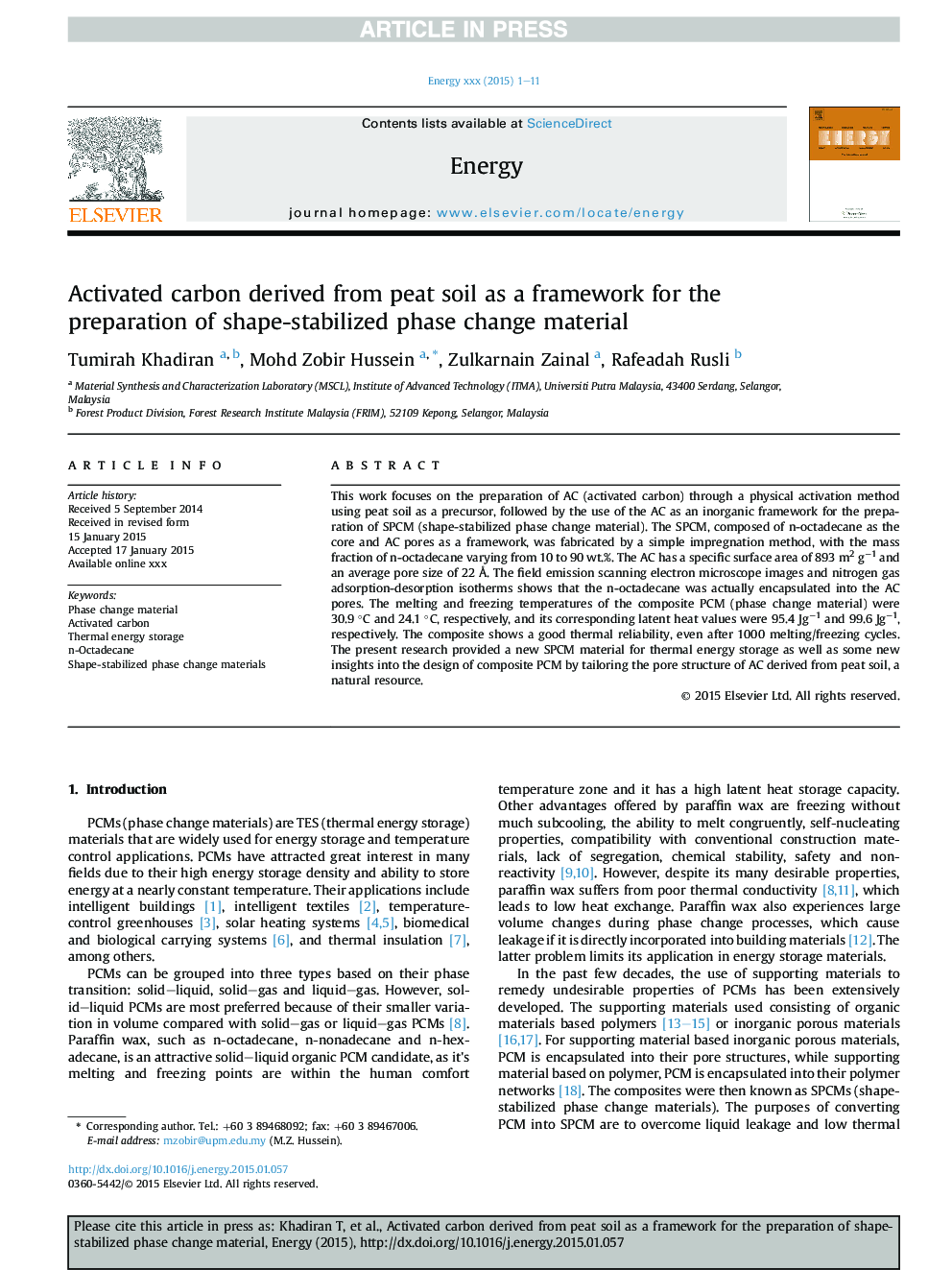| Article ID | Journal | Published Year | Pages | File Type |
|---|---|---|---|---|
| 8075294 | Energy | 2015 | 11 Pages |
Abstract
This work focuses on the preparation of AC (activated carbon) through a physical activation method using peat soil as a precursor, followed by the use of the AC as an inorganic framework for the preparation of SPCM (shape-stabilized phase change material). The SPCM, composed of n-octadecane as the core and AC pores as a framework, was fabricated by a simple impregnation method, with the mass fraction of n-octadecane varying from 10 to 90Â wt.%. The AC has a specific surface area of 893Â m2Â gâ1 and an average pore size of 22Â Ã
. The field emission scanning electron microscope images and nitrogen gas adsorption-desorption isotherms shows that the n-octadecane was actually encapsulated into the AC pores. The melting and freezing temperatures of the composite PCM (phase change material) were 30.9 °C and 24.1 °C, respectively, and its corresponding latent heat values were 95.4 Jgâ1 and 99.6 Jgâ1, respectively. The composite shows a good thermal reliability, even after 1000 melting/freezing cycles. The present research provided a new SPCM material for thermal energy storage as well as some new insights into the design of composite PCM by tailoring the pore structure of AC derived from peat soil, a natural resource.
Keywords
Related Topics
Physical Sciences and Engineering
Energy
Energy (General)
Authors
Tumirah Khadiran, Mohd Zobir Hussein, Zulkarnain Zainal, Rafeadah Rusli,
